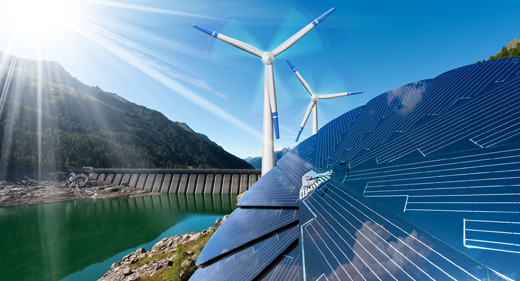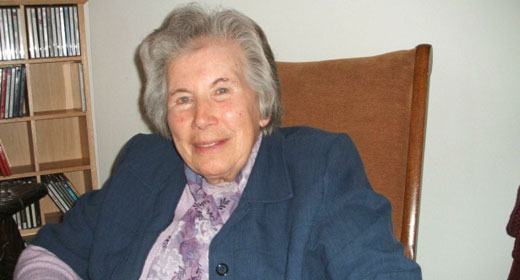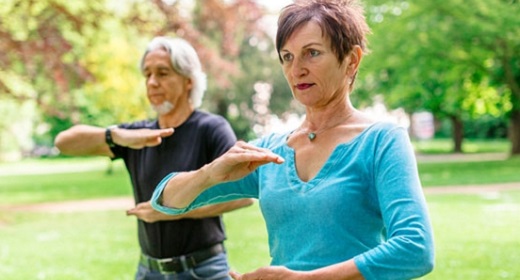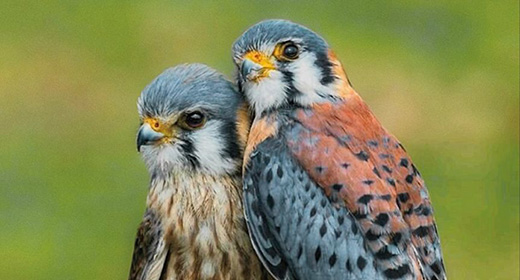Why do we practise the Warrior Poses in yoga?
As the name suggests, the Warrior Poses are postures of strength and courage. They help us to connect with our inner power. They are also very grounding postures, helping us to feel rooted and committed to being here.
Warrior Poses are great poses to practise to cultivate physical and emotional strength anytime you are feeling weak or uncertain. They can also be beneficial for bringing about positive changes in your life, or strengthening your willpower. These poses can help you to find your self-confidence and evoke your inner warrior.
The Sanskrit name for Warrior Pose is Virabhadrasana. This comes from a combination of the Sanskrit word asana which means “posture” or “seat” and the name of the mythical warrior Virabhadra. According to legend, the God Shiva created the warrior Virabhadra from a lock of his hair to avenge the death of his beloved wife Sati. Sati had thrown herself into a fire after falling out with her father, the priest Daksha, because she could no longer stand his insults. She wanted to disown the body he had given her. Shiva tasked Virabhadra with destroying Daksha. The name Virabhadra itself comes from the two Sanskrit words vira meaning “hero” and bhadra meaning “friend”.
Each Warrior Pose conveys and helps us to connect with a different aspect of Virabhadrasana’s heroism, courage and strength in serving Shiva. They can also be seen as postures that help us to connect with our inner spiritual warrior, doing battle with the ego, ignorance and suffering.
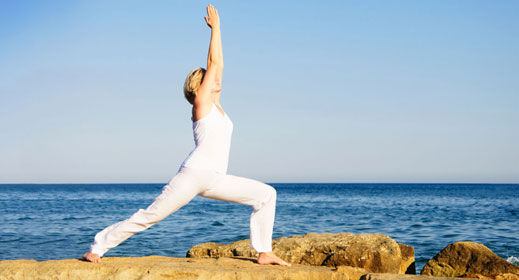
Virabhadrasana I
To enter Virabhadrasana I from Tadasana or Mountain Pose:
- Step the left foot about 4 feet behind you, and place it flat on the mat, at about a 60 degree angle with the front of the mat, with the left heel in line with the right heel.
- Bend the right knee so that the right thigh comes towards parallel with the ground.
- Lift the arms over the head, palms facing towards each other.
- Square the front hip points forward, lifting them slightly and allowing the tailbone to lengthen towards the ground.
Awareness Pointers
The gaze can be straight ahead or up between the hands. As you remain here, focus on firmly grounding the outer edge of the back foot, as you deepen the bend in the front knee. Lift the lower abdomen to encourage the lower back to lengthen.
Aspect of Story
This posture symbolises Virabhadrasana’s first arrival. He rises of from the earth with two swords in his raised hands. It is a posture which faces squarely to the front, as if to say “I am here.” Virabhadrasana helps you to fearlessly face whatever tasks or obstacles may be in front of you.
Benefits
Virabhadrasana I is highly beneficial physically for:
- Stretching the chest, sides, shoulders, abdomen, calves and psoas.
- Relieving lower back pain and sciatica.
- Strengthening the muscles of the legs, back and shoulders.
Variations and Modifications
Virabhadrasana I can be a deceptively challenging pose. To make it more accessible, try these modifications:
- Take the front foot slightly wider, “train-tracking” the feet to create a more stable base.
- Lift the back heel to help the hips face squarely to the front.
- Tilt the body slightly forward, drawing the lower belly in for support to ease any tension in the lower back.
Virabhadrasana I can also be practised with the palms pressed together if the openness of the shoulders allows it. The hands can also be placed in Kali mudra with the fingers interlaced and the index fingers pressing together and pointing to the sky. This is said to awaken the energy of transformation and purification.
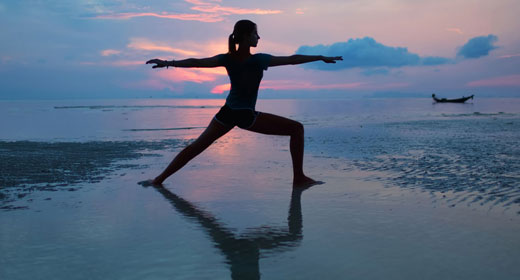
Virabhadrasana II
To enter Virabhadrasana II from Tadasana or Mountain Pose:
- Step the left foot about 4 feet behind you, and place it flat on the mat, parallel to the front of the mat, and with the left heel in line with the right heel.
- Bend the right knee so that the right thigh comes towards parallel with the ground. Keep the knee tracking over the toes.
- Open the hips as much as possible to the left and have the torso square to the long edge of the mat.
- Lift the arms to the sides, hands at shoulder height and turn the head to the right to gaze along the right middle finger.
Awareness Pointers
As you remain here, focus on externally rotating the thighs, keeping the right knee stacked over the ankle. Keep the body straight with both sides of the waist long so that you are neither leaning forwards or backwards. Lift the lower abdomen to create space for the lower back to lengthen.
Aspect of Story
This posture symbolises Virabhadrasana seeing his opponent. Virabhadrasana II helps you to take aim, setting your goals in your sight with conviction and focus.
Benefits
Virabhadrasana II is highly beneficial physically for:
- Stretching the groin, legs, chest and shoulders.
- Strengthening the muscles of the legs, back and shoulders.
- Relieving backache, sciatica and flat feel.
Variations and Modifications
Virabhadrasana II can be made more or less challenging by increasing or decreasing the separation between the feet, while always keeping the front knee stacked over the ankle.
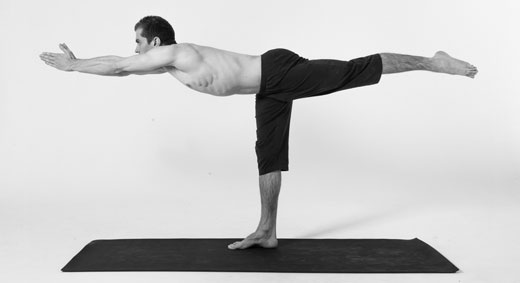
Virabhadrasana III
To enter Virabhadrasana III from High Lunge:
- Reach the arms forward with the palms facing each other.
- Transfer the weight forward, straightening the front leg as you lift the back leg.
- Bring the body into the line so that you create a straight line from the end of the middle fingers through to the heel of the back foot.
- Gaze forwards, without compressing the back of the neck.
Awareness Pointers
Focus on keeping the pelvis square to the ground. Draw the lower abdomen in to support the back and help with balance. Extend through the fingers and through the back heel, energising the length of the body and limbs.
Aspect of Story
This posture symbolises Virabhadrasana decapitating his enemy with his sword. It is a posture of refined, precise and decisive action.
Benefits
Virabhadrasana III is highly beneficial physically for:
- Strengthening the muscles of the legs and ankles, especially the smaller muscles of the legs and feet.
- Strengthening the back, the core and the shoulders.
- Improving balance.
Variations and Modifications
Virabhadrasana III can be modified by microbending the standing leg to prevent the knee from hyperextending. This provides additional strengthening benefits for the legs. It can also be practised with the back foot or the fingers against a wall to help with balance.
The arm position can be changed for different variations of Virabhadrasana III, for instance by taking the arms out to the sides, or reaching them back so that the fingers point towards the feet.

